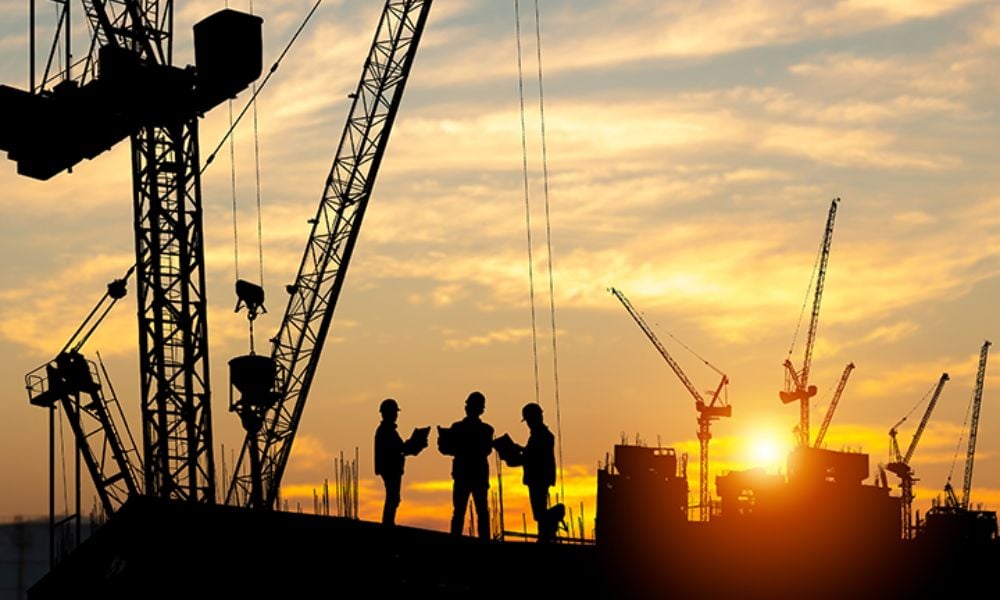Historically, there has been a strong tendency in the construction industry to take the disputes that emerge over the course of a major project, file them away “like a squirrel storing up nuts for the winter,” and settle them all at the project’s completion, says lawyer Bruce Reynolds. But the typical mid-sized project takes two to two-and-a-half years, and a major infrastructure project will take five to seven, he says. In the interim, the general contractor and subcontractors will be under “extreme financial pressure.” With high interest rates adding to the stress, the costs accumulate significantly.
“As does the imagination deployed to the calculation of damages when folks have a period of years to consider just how large their claims should be,” says Reynolds, co-managing partner of Singleton Urquhart Reynolds Vogel LLP and co-chair of the firm’s international construction projects group. “By the time you get to the end of a construction project, if you haven’t made a serious effort to resolve disputes as they emerge, you tend to have a rather mammoth, multifaceted dispute awaiting the parties, their lawyers, and their consultants when the project is essentially completed.”
But for parties seeking the urgent adjudication of a dispute, as is often the case on a large construction or infrastructure project, the courts are not currently well suited to the task, says Andrew Parley, a partner at Lenczner Slaght LLP whose practice primarily involves litigation and dispute resolution in construction, infrastructure, and real estate. He says that the courts can offer a half-day on an urgent basis, but more time is required to digest these complex issues. For more than one day in front of a judge, parties are booking 12 to 18 months into the future.
“Whereas there was probably a time where you can get in front of a judge and get some quick decisions on an urgent matter in real time, that’s become more and more difficult,” he says. “The parties to construction projects are not very frequently turning to the courts and are far more often relying on alternative dispute resolution or private arbitration to deal with the disputes that arise on their projects.”
These delays in resolving business disputes are increasingly driving arbitration work, says Craig Ferris, a partner at Lawson Lundell LLP and former president of the Law Society of British Columbia. Ferris had a US-based client, a multinational company, tell him he would not enter a Canadian contract without an arbitration clause because the Ontario civil delay they experienced in one case was the worst they had seen anywhere in the world.
Parley says mid-project mediation is often the best way to keep a project on track while allowing some resolution. That resolution can be on an interim or a final basis – usually a mix of the two, with some aspects deferred to another day – depending on the dispute’s nature. He says this will often involve schedule and financial relief that will allow parties to move forward without a final adjudication on all aspects of the dispute.
“That mediation process is helpful and often the best way forward,” says Parley. “It requires counsel who understand the imperative of keeping the project moving. It requires a mediator who understands the nature of the project and often some of the technical issues arising on a given project.
“So, the right selection of counsel and mediators play a big part in the success of a mid-project mediation.”
Mediation’s success record for disputes that have ripened to the point of sufficient information exchange is “in the order of 90 percent,” says Reynolds. “A mediator is, in essence, the Lone Ranger, a diplomat extraordinaire who manages to work with the parties to achieve a consensual resolution.
“For folks who would rather not enjoy the experience of a full trial of their dispute or full arbitration of their dispute and do appreciate the benefits of confidentiality, the most powerful dispute resolution mechanism available in the market is mediation.”
He says that is partly because mediation is “infinitely flexible,” and parties can choose the mediator and craft a bespoke process appropriate and proportionate to a simple or complex dispute.
Parley says that the most effective mediations are tailored to suit the nature of the dispute instead of booking a mediator and using boilerplate materials and standard processes used in the past. “That, I think, leads to some really interesting results and provides for creative solutions to problems that otherwise seem intractable.”
Both Reynolds and Parley note that mediation or another form of mid-project dispute resolution prevents festering conflicts from piling up costs and poisoning the project. Though it will be in one party’s favour, both parties benefit from the result since the issue will not compound over time and become a potentially project-threatening dispute, says Parley.
“Better to nip these things in the bud early when they’re smaller and manageable.”
“It actually resuscitates the DNA of cooperation between the project participants,” says Reynolds, “and prevents the relationships from being poisoned by the running existence of a major dispute, which … has a tendency to grow and metastasize.”
In October 2019, Ontario amended the Construction Act to introduce the Ontario Dispute Adjudication for Construction Contracts (ODACC), the authorized nominating authority responsible for administering adjudications under the Act and training and qualifying adjudicators.
Parley says ODACC has had less uptake than had been anticipated.
According to ODACC’s 2022 annual report, only 121 adjudications commenced, and 67 decisions were rendered in the province that year. While 34 remained open at the end of 2022, another 24 were terminated.
“It’s partly because the players within the construction industry are not convinced that the statutory adjudication process provided by the Construction Act is helpful or will allow them to resolve their mid-project disputes in real time,” says Parley.
Reynolds says a dispute resolution board (DRB) is another popular option for mid-project ADR. A DRB is a board of independent professionals formed at the beginning of a construction project who monitor the process, help avoid disputes, and assist in their resolution. He says that governmental owners are increasingly using DRBs.
Lawyers say one problem with the increasing popularity of ADR in the construction – or any other – space is that case law does not develop because the dispute resolutions are confidential.
Ferris says this creates an “expertise and jurisprudence vacuum” in the courts.
With many large construction disputes arbitrated in Canada without seeing the light of day, arbitrators and judges deciding on these disputes lack the benefit of decisions rendered by others, says Parley. He says it makes it more difficult for the law to develop and for parties to recognize the rules, the exceptions to rules, and the frameworks to apply to certain disputes.
“I see that as a problem, and as one that is significant… Unfortunately, we’re left to rely on the same few cases again and again. Or, to reach into American or English case law to try to find precedents that fit the particular circumstances of the case.”
Parley says that the construction law bar would benefit if arbitrations were public and other arbitrations could rely on them. He understands why parties want their arbitrations confidential and adds that they are entitled to privacy. “But on the macro level, when each party decides individually to do it in a private arbitration, it does lead to this larger issue. I think it is a problem for the construction law bar in Canada.”





